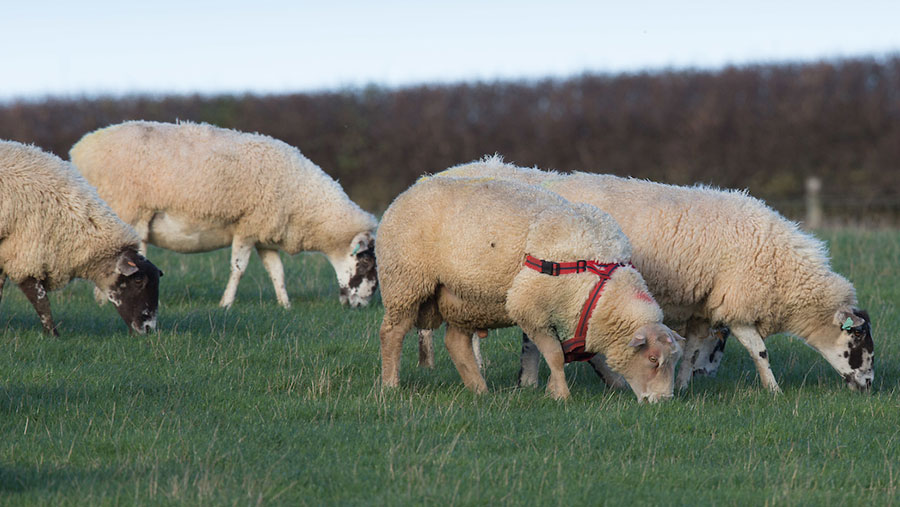4 sheep grazing tips to maximise strong autumn grass growth
 © Tim Scrivener
© Tim Scrivener Sheep farmers could look to control costs and extend the 2019 grazing season by maximising strong autumn grass covers.
This is the advice of independent beef, sheep and forage consultant Liz Genever, after higher than average summer temperatures and rainfall have left many farms with an abundance of grass.
Providing fields aren’t too wet, graziers should look to subdivide fields to make the best use of this stock-piled feed.
“A lot of farms can benefit from this, either by extending the grazing season, looking at starting all-grass wintering, or just by delaying housing for a month,” says Dr Genever.
See also: Durham farm saves costs with grassland focus and weighing
Some fields are so strong they will need two grazings.
But with land quite tender after all this heavy rain, farmers need to think how they are going to manage cattle, prioritising permanent pasture or land with more carrying capacity.
Four key grazing tips
Whatever the situation, there are four principles to guide autumn grazing plans, says Dr Genever:
- Rest pastures for at least 90-100 days If you want to graze a field in March, you must be off it by December. Once a field is grazed down to 3.5-4cm, it should be closed. If you are lambing in early March, you should start closing up the farm in mid-October, have 60% of the farm closed by late November and 80% by mid-December (for more information, search online for Teagasc Sheep Autumn Closing Planner).
- Graze the field hard to reset it for spring growth Resetting a field means grazing it down to about 3.5-4cm (1,200-1,500kg/ha of DM) over winter. This allows for strong regrowth in the spring.
- Achieve good grass to soil contact A lot of grass covers will be 3,000-3,500kg/ha of DM or more (10-12cm tall) with grass dying (senescing). This grass needs to be broken down and build up organic matter in the soil but to do this it has to be in contact with soil by gentle trampling. Cattle are a great way to do this, but heavily stocked sheep can do it also. If this dead, stalky grass doesn’t break down, it will shade out regrowth through the winter and into next year.
- Sub-divide pastures Autumn pasture quality may be lower, especially if there is a build-up of dead material, but to manage the grass properly, sheep need to be made to eat it. If sheep are in good condition, they could be mated on long pasture as long as they allowed to eat the best bits and move on.
Advice on pasture subdivision
“If you’re getting the ewes to eat down into lower-quality grass, performance will suffer,” warns Dr Genever.
“Accept the stock might not do as well, target the ewes in the best condition at this grass – your priority should be to get the grass ready for next spring.”
- To get through the forage that has already been grown, it will be necessary to subdivide a field to increase the grazing pressure on the grass.
- A water trough in a field corner can be used to supply water for both halves of a field if the field is fenced diagonally.
- Another option could be a tub placed in the centre of a field filled with a water tank from a quad bike trailer to allow the field to be grazed in quarters.
Economics
Ensuring stock-piled grass is grazed down to 3.5-4cm is a cost-effective strategy because it will ensure the best grass is available in the spring, when sheep need it the most.
A 70kg lowland ewe needs 8 megajoules (MJ) a day for maintenance.
This lifts to 18MJ prior to lambing and 25+MJ for lactation.
Good-quality spring grass can be 12ME and above and, depending on soil nitrogen levels, can be 17-19% crude protein.
“It’s far more cost-effective to supplement sheep in mid-gestation than it is once they’ve lambed, as you need to provide less energy,” says Dr Genever.
“It allows for grass to be saved for early lactation so their high requirements can be met from grass alone.”
